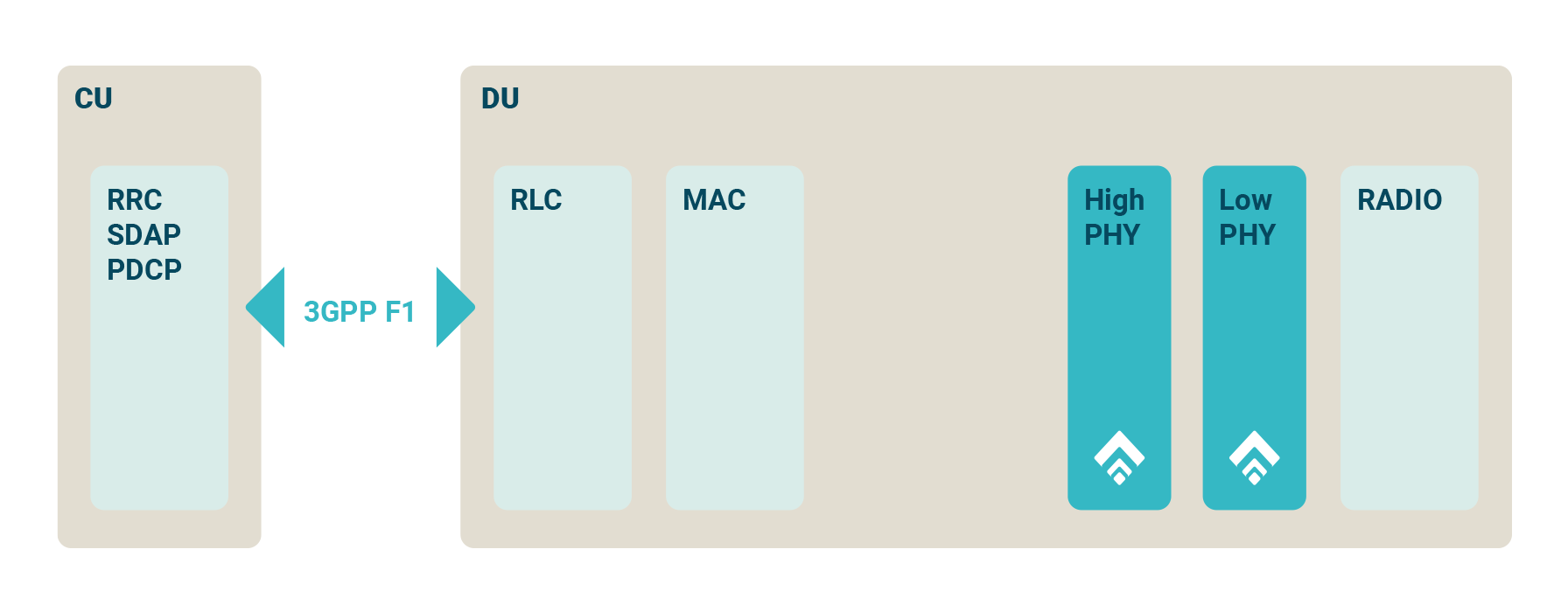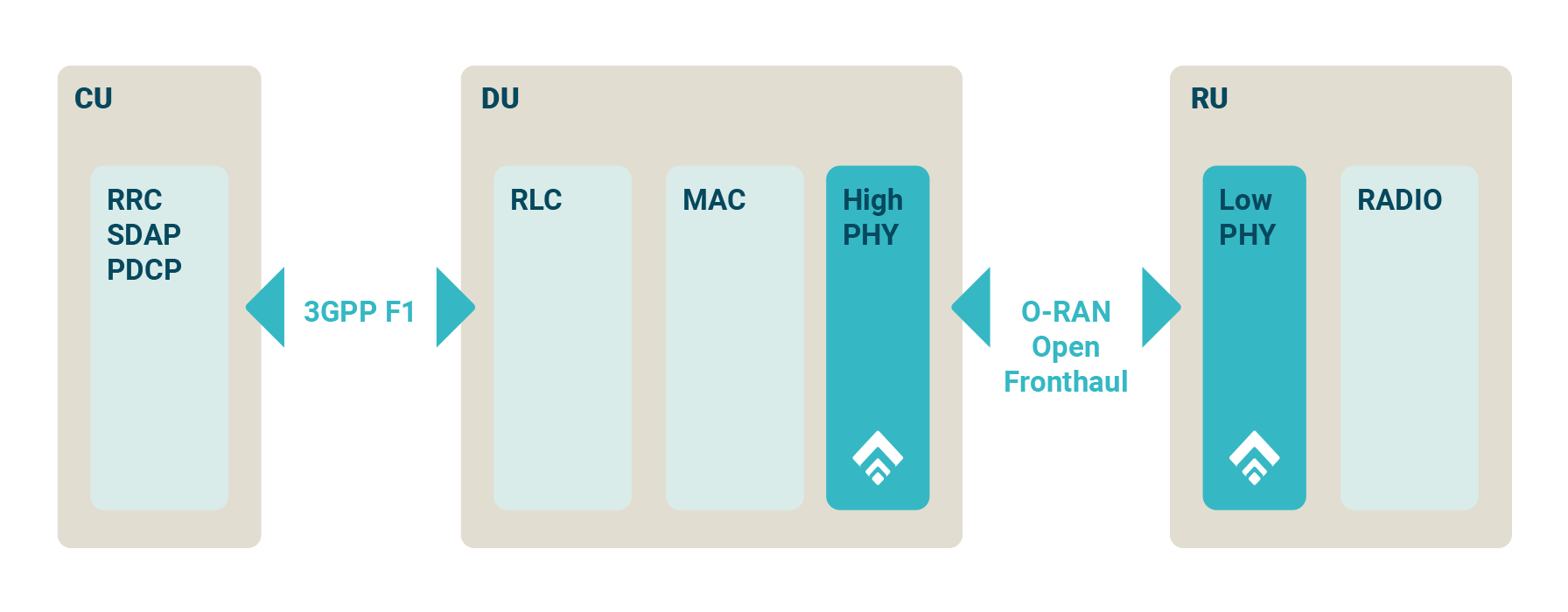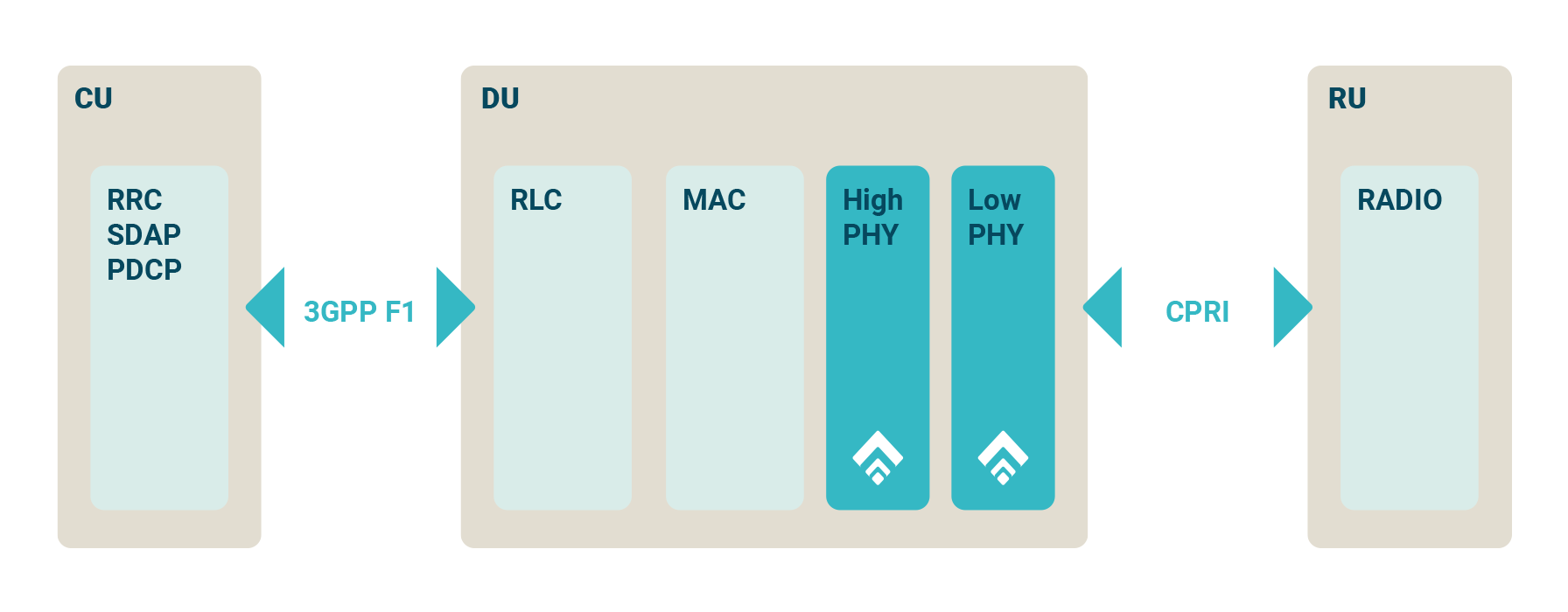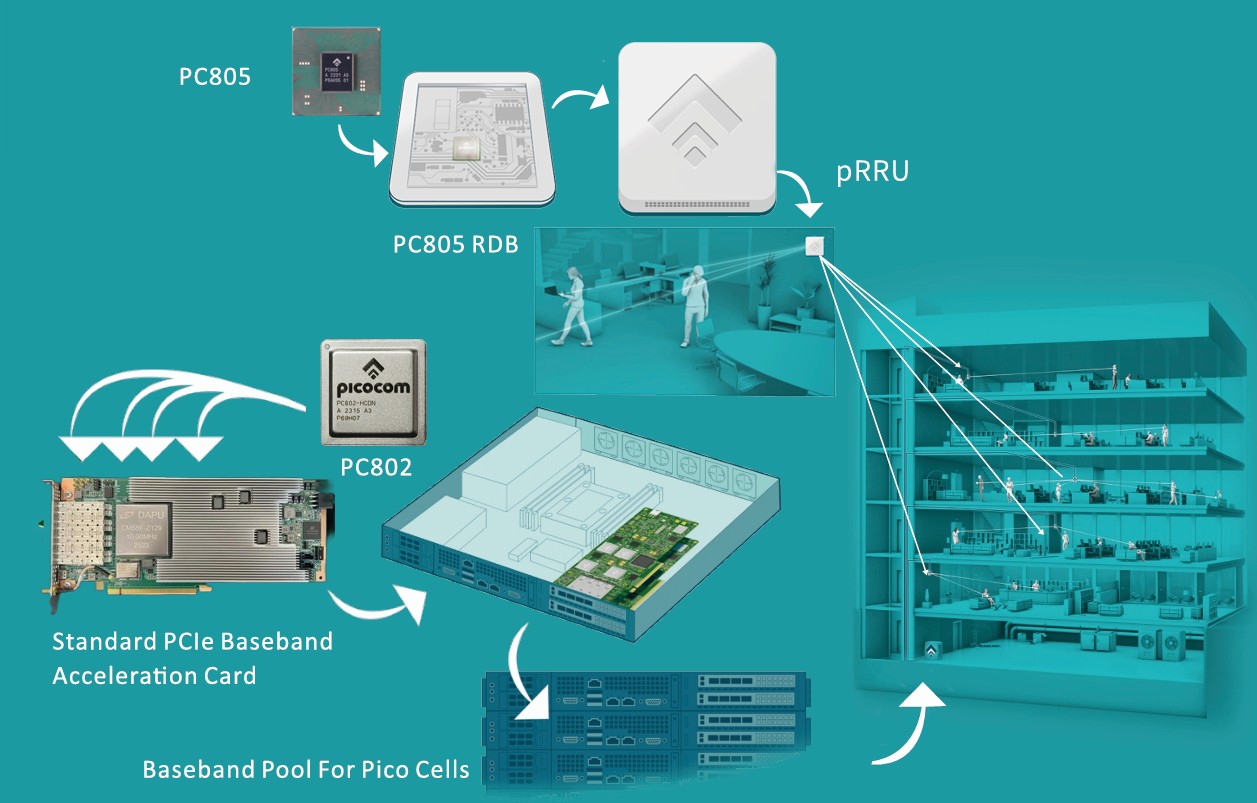Mobile Network Operator
One of the biggest benefits of 5G for Mobile Network Operators (MNOs) is the prospect of migrating from custom network nodes to a far more flexible approach that enables network nodes to be implemented in software running on generic hardware platforms. In the core network, this process is in an advanced state, with virtualisation and orchestration techniques from the IT world now being used to deploy network functions automatically at a large scale.
The process is a lot more difficult in the RAN and backhaul network, and the prize for MNOs is greater here as these functions typically account for 70-80% of Capex. In Release 15, the 3GPP identified various functional splits in the 5G NR RAN gNodeB (base station) that would facilitate this process, identifying eight possible places where the gNodeB function could be split into separate functional units. The most popular of these are:
Split 0 - gNodeB Integrated Small Cell

Split 2 - 3GPP F1

Split 6 - Small Cell Forum (SCF) nFAPI

Split 7.2 - O-RAN Open Fronthaul

Split 8

Picocom’s products enable this. With its Open RAN standard-compliant baseband semiconductors (System on Chip / SoC) and carrier-grade software, Picocom is empowering wireless vendors and new market entrants to compete in the rapidly evolving disaggregated telecoms RAN market.
In-building Small Cell Deployment Example
Picocom designs products focussed on RAN for small cell deployments that use the standard interfaces. The Extended Picocell Base Station Solution is designed to address weak signals or coverage hole that occur with macro base stations in indoor deep-coverage and complex wireless environments. Its advantages include compact size, lightweight design, and flexible installation, making it ideal for providing reliable wireless coverage in various indoor settings and complex environments where public network signals struggle to penetrate, such as large shopping malls, office buildings, hospitals, subway stations, sports arenas, and transportation hubs.
The solution comprises the following key components:Core network, 4G/5G dual-mode extended picocell base station, EU server and pRRU (micro remote radio unit) equipment.The extended picocell base station features a 4G+5G dual-mode baseband acceleration card based on the PC802 chip. This standard PCIe card (3/4-length full-height form factor) integrates three PC802 chips and one FPGA, with deeply optimized 4G and 5G PHY layer software. It plugs into servers running L2/L3 protocol stacks.For RF processing, the pRRU equipment utilizes the PC805 chip to deliver high-performance, low-power digital front-end (DFE) processing.
A 5G PHY contains many functions that are very inefficient to implement on general-purpose processors. In current implementations, each vendor uses their own custom hardware and proprietary interfaces. This creates vendor lock-in and does not deliver the promised 5G cost reductions that are achieved through standardised solutions.
Picocom is developing products focussed on RAN for small cell deployments that use the standard interfaces described above. Our first products include:
- PC802 Open RAN SoC optimised for small cells. It employs the FAPI protocol (defined by the Small Cell Forum) to communicate with and provide physical layer services to the MAC. The device has an integrated O-RAN Alliance Open Fronthaul interface, based on eCPRI, to connect and communicate with Open RAN (remote) radio units (RUs), as well as JESD204B interfaces to connect gluelessly with commonly available radio transceivers.
- An SoC that performs all the digital functions of a small cell RU, communicating with a DU using O-RAN fronthaul and having glue-less interfaces to commonly used radio transceivers.


